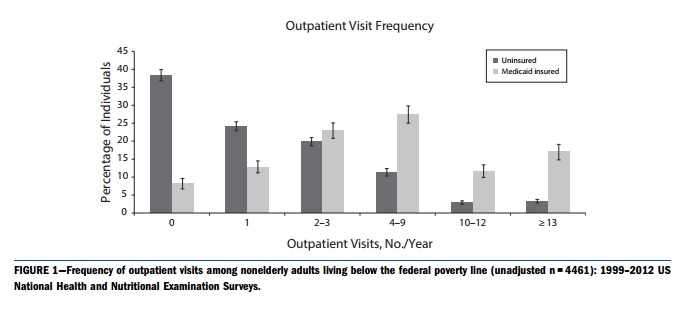Is Increased Medicaid Coverage the Chronic Disease Solution?
According to Harvard researchers, Medicaid beneficiaries are 5 times more likely to step inside of a physician’s office compared to those without health insurance.

- What do Manhattan rents, Ferraris, college tuition, and chronic disease all have in common? They are all really expensive.

What is especially problematic is that chronic diseases are not only very costly, but also very common within the healthcare industry.
Having health insurance apparently makes a big difference when it comes to advancing all matters of chronic conditions, cost, and care quality.
Those with Medicaid insurance who are of low socioeconomic status experience a higher quality treatment of chronic diseases compared to the uninsured, according to research from Harvard Medical School in the American Journal of Public Health.
Is preventing chronic conditions a simple Medicaid fix?
Prior to alleged popular belief, Medicaid may be actively encouraging people to see the inside of a doctor's office more often and is therefore aiding in the prevention of chronic conditions.
“We found that Medicaid greatly improves blood pressure control,” said researcher Andrea S. Christopher, MD, in a press release.
“People with Medicaid were 69 percent more likely to be aware of having high blood pressure and 62 percent more likely to have control of their high blood pressure. We know that’s the key to preventing strokes and heart attacks.”

The researchers say their findings contradict earlier leading research from the Oregon Health Insurance Experiment with evidence claiming Medicaid fails to improve physical health.
“In the Oregon study, uninsured patients averaged 5.5 doctor visits annually,” stated Christopher. “That’s not the situation for uninsured patients in rural parts of the country like Idaho, where I trained. They’re lucky if they can get to see a doctor at all.”
Is Medicaid better than nothing?
An apple a day may keep the doctor away, but apparently being uninsured keeps the doctor far, far away.
Medicaid beneficiaries are 5 times more likely to step inside of a physician’s office compared to those without health insurance, researchers assert. Sixty percent of uninsured patients saw their physician either once annually or not at all, researchers additionally discovered.

“This suggests that uninsured patients in Portland, where the Oregon Experiment was carried out, have much better access to safety-net care than do uninsured Americans elsewhere. Hence, the Oregon Experiment’s findings probably are not applicable to the nation as a whole,” asserted researcher Andrew Wilper, MD, MPH.
“We need to get everyone covered in a single-payer system, but until we do, Medicaid is clearly better than no coverage. The Affordable Care Act expanded Medicaid to some states, but not all,” stated Danny McCormick, Associate Professor of Medicine at Harvard.
"We must do better than that if we want to improve the health of all Americans. With mounting proof that Medicaid improves health, why are politicians refusing to cover their constituents?”
How expensive is chronic care?
Chronic care costs 17 times more than average, confirmed a study from American Journal of Managed Care.
“A small percentage of patients are responsible for the majority of healthcare spending in the United States,” the study stated. “This trend has remained extremely stable over the years, with only slight fluctuations in the amount of healthcare spending attributable to the top users. Between 1970 and 1996, approximately 66 percent to 72 percent of annual healthcare costs were attributable to the top 10 percent of healthcare users.”
“Today, the vast majority of Medicare dollars are spent caring for patients living with multiple persistent, chronic health conditions that require a variety of services,” said Ranking Member Ron Wyden (D-OR) at a Finance Committee Hearing last May.
“Although it’s a good thing that care is being provided outside the hospital, but this care is – more often than not – uncoordinated and costly. With a trend this clear, it’s time for both parties to tackle this issue head on.”
“With an aging Medicare population and more people developing chronic conditions at a younger age and then entering Medicare coverage with those chronic conditions, you're naturally going to see more spending on chronic conditions,” stated Tonya Saffer, MPH, the National Kidney Foundation’s Senior Health Policy Director, to RevCycleIntelligence.com.
“However, realigning payment for healthcare to incentivize identifying those conditions early on – like kidney disease – and taking a multipronged approach to management that includes things like nutrition counseling, medication management, and delivering patient-centered care, can really curb those costs."
